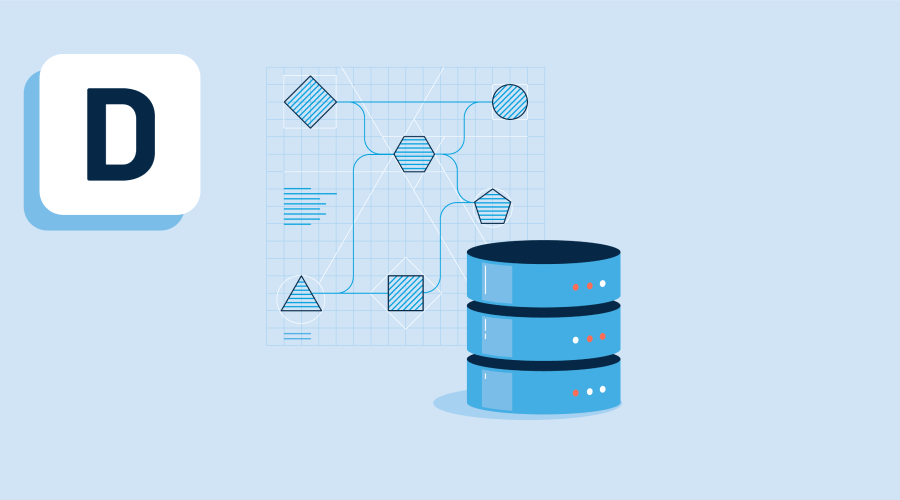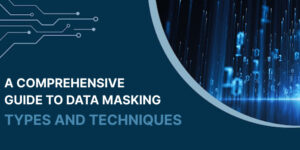
Data modeling is a valuable technique used in the IT industry to understand better and organize data. It helps identify potential areas of improvement, streamline current processes, and improve accuracy across systems. Data models are typically divided into three types: conceptual, logical, or physical, depending on how abstract the model conceptually is from its underlying structure.
Techniques such as relational, network, and more allow us to quickly analyze our data’s architecture for optimal efficiency while protecting sensitive information at all levels of complexity. In this blog, we go through what is data modeling and its types, and techniques.
What is data modeling?
Data models are abstract representations of a data set and its underlying relationships. They provide the foundation for designing databases and applying sophisticated analysis approaches to understand complex phenomena or solve challenging problems.
Data modeling involves organizing information into an easily understandable structure, which can be used by database designers, data scientists, business analysts, software engineers, and others working with large datasets.
It allows them to quickly analyze vast amounts of information to gain insight into market trends or consumer behaviors that may have yet to be apparent if this same dataset had not gone through the process of being modeled first. With clear insights from practical data modeling activities, businesses can make informed decisions faster than ever!
Types of data modeling
1. Conceptual Schema
Conceptual Schema is a powerful data model for structuring and organizing information intuitively. It provides a high-level view of the organization’s data components, capturing entities, their relationships to one another, and how they are related across various platforms. This allows organizations to query massive datasets faster than traditional models such as relational databases or flat files, allowing users greater efficiency when accessing complex structured environments.
Conceptual Schema offers scalability benefits while still providing tight control over access rights and security settings so that all parties can trust that critical business decisions will always be accurately represented by accurate data points stored securely within its framework. It’s one of the crucial types of data modeling.
2. Logical Schema
A logical schema is a data modeling technique that simplifies and organizes database information. It helps structure complex sets of interrelated entities into an easy-to-navigate form, ensuring that the corresponding systems can quickly store and access the data. This type of model consists of several elements:
- Tables containing records with attributes, identifying relationships between them.
- Views for controlling how users view certain parts of the table’s content as well as their queries.
- Constraints are imposed on each attribute or record to define valid input values.
With logical schemas, businesses benefit from increased database accuracy by allowing easier querying capabilities resulting in faster processing speeds. It’s one of the unique data modeling concepts.
RELATED: How to Connect SQL with Python for Efficient Data Processing
3. Physical Schema
Physical data modeling is the process of transforming business requirements into a structured system design. It involves creating models representing how data will be stored and accessed, encompassing everything from database structures to file systems. Physical Schema outlines relationships between different data model elements to create an optimal query performance allowing for quick access and retrieval times within databases.
This method can improve overall efficiency by minimizing redundant information and utilizing appropriate attributes to ensure accurate outcomes are achieved with queries. With proper physical schema designs, businesses increase their scalability while reducing costs associated with storage and computational needs making this one critical aspect in any successful enterprise application’s life cycle strategy management approach!
What are data modeling techniques?
Data modeling techniques are powerful tools to make sense of data, enabling professionals to analyze better, visualize and work with large sets of information. They provide the structure for efficient processing and uncovering deeper insights from complex datasets.
1. Hierarchical technique
The hierarchical data modeling technique effectively captures complex relationships between entities and attributes in a database. It involves creating multiple hierarchical levels or layers to store information such as customer records, product sales details, employee information, etc. This technique helps organize data into meaningful categories so users can easily navigate the system.

Each level consists of related items linked together through their parent-child relationship forming a tree structure with each branch representing one item from the parent category down all its children categories on subsequent levels.
This structured approach provides efficient retrieval and manipulation capabilities for any query against the underlying database across different combinations of elements at various layer depths. It enables fast access times even with millions of entries stored inside it. It’s the best data modeling concept.
2. Relational technique
The relational technique is an approach to data modeling that allows you to describe how your data should be organized and linked. It builds relationships between tables of information, making it easier for users to find the answers they need more efficiently than traditional methods. With relational techniques, even large datasets can be quickly accessed without complicated coding or manual processing.

Through this method of organization and normalization, valuable insights into trends or outliers may become evident, allowing businesses to make better decisions with their available resources while avoiding costly mistakes through access to accurate, up-to-date records in real time.
Using effective techniques like entity relationship diagrams (ERD) could further assist organizations by mapping out databases visually, providing stakeholders with a clear understanding, and reducing complexity when updating models. Ultimately, Relational Techniques are critical components within advanced analytics & business intelligence projects, ensuring accuracy & efficiency across all operations!
3. Network technique
Network approach is a type of data modeling that effectively explains and presents complex relationships between items. It enables users to quickly identify patterns, connections, or correlations by mapping out the different components in their dataset as nodes on a graph. This approach makes it easy for viewers- experienced analysts and newbies alike- to quickly get insights from large datasets without information overload.

Networking techniques have become increasingly popular due to their intuitive visual display capabilities, which allow even non-technical people with no experience in data analysis to draw quick conclusions about their business operations. The network technique has established itself within the repertoire of essential modern-day marketing strategies used worldwide!
4. Entity-relationship technique
The entity-relationship technique is a popular data modeling technique used by businesses and organizations to help them efficiently manage their vast amount of information. It focuses on capturing the relationship between entities, which can be people, processes, or other items that impact one another.
This type of modeling helps make it easier to express complex relationships in easy-to-understand diagrams that allow technical and non-technical users to understand the underlying structure quickly.
Entity Relationship techniques also provide valuable insights into the data layer required for successful business operations such as customer segmentation analysis, risk management activities, and marketing campaign optimization -making this approach highly sought after across many industries today.
RELATED: 10 Most Powerful Data Modeling Tools
5. Object-oriented technique
The object-oriented technique is a data modeling technique used to design databases, documents, and applications. It enables developers to structure their code in ways that make the system easier to use, maintain and outline issues related to security. With this method, you create ‘objects,’ which are collections of information about something like an email address or shopping cart order details.
Objects have specific properties which can be attached, such as size, color, or quantity, allowing them to store more detailed information than would be possible using standard methods alone.
Object-oriented techniques provide better performance due to their modularity when compared against typical ‘flat file’ models – meaning systems developed using OOP require less time and effort to keep updated over time, making it an attractive choice for businesses seeking cost savings from their software development investments.
Advantages of Data Modeling:
- Defines relationships between data to optimize databases.
- Enhances analysis and improved decision-making for businesses.
- Helps analyze large quantities of complex information quickly and accurately.
Disadvantages of Data Modeling:
- Complex process that requires significant expertise in database design, programming, etc., Top resource-intensive endeavor when done manually or with outdated technology systems.
- Potentially expensive if not well planned & managed correctly due to the potential need for IT personnel and software programs dedicated solely to this purpose
Why is data modeling important
Data modeling is critical to professional success in today’s digital world. Organizations can better manage their vast information stores by creating logical data models that are easy to understand and access. Data modeling allows them to identify patterns and trends and make more informed decisions about what kinds of technology investments should be made in the future.

Additionally, it helps businesses keep track of progress toward larger goals by offering insight into how an organization’s resources are used most effectively over time. In short, data models provide invaluable guidance for professionals across industries – from finance managers who must ensure financial accuracy to IT experts responsible for managing databases efficiently – so they may confidently move forward knowing all relevant factors have been accounted for accurately and thoroughly!
Conclusion
Data modeling is a powerful tool for understanding and manipulating data to create meaningful insights. It allows businesses to gain access to valuable information, helping them make informed decisions that will improve the quality of their workflow and operations.
Many different types and techniques are used in data modeling, allowing better visualization relationships among datasets. With these tools at our disposal, we can quickly identify patterns between groups or attributes within data sets, thus allowing us greater control over how we manage it accordingly with desired outcomes achieved. We hope this blog is useful to the readers.






